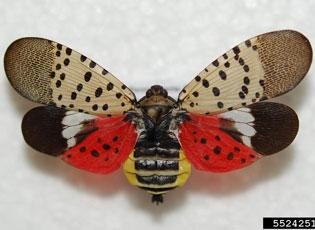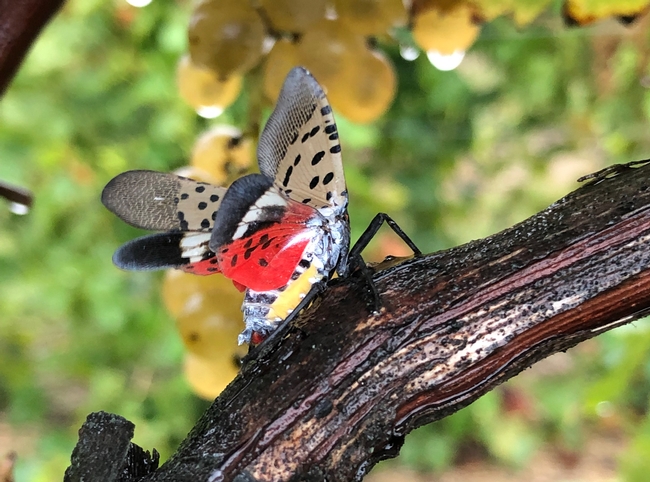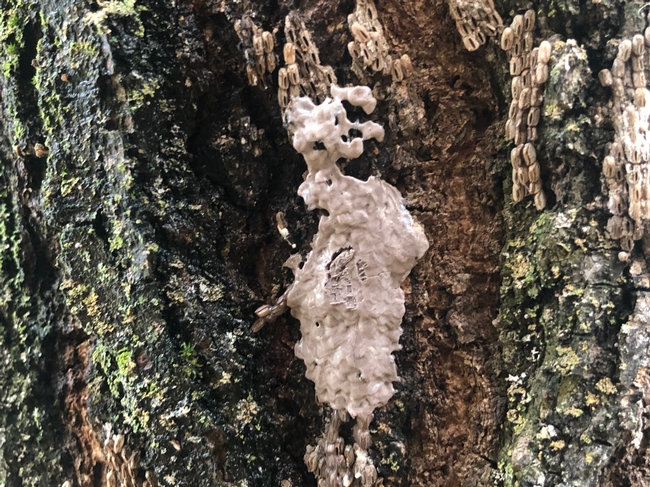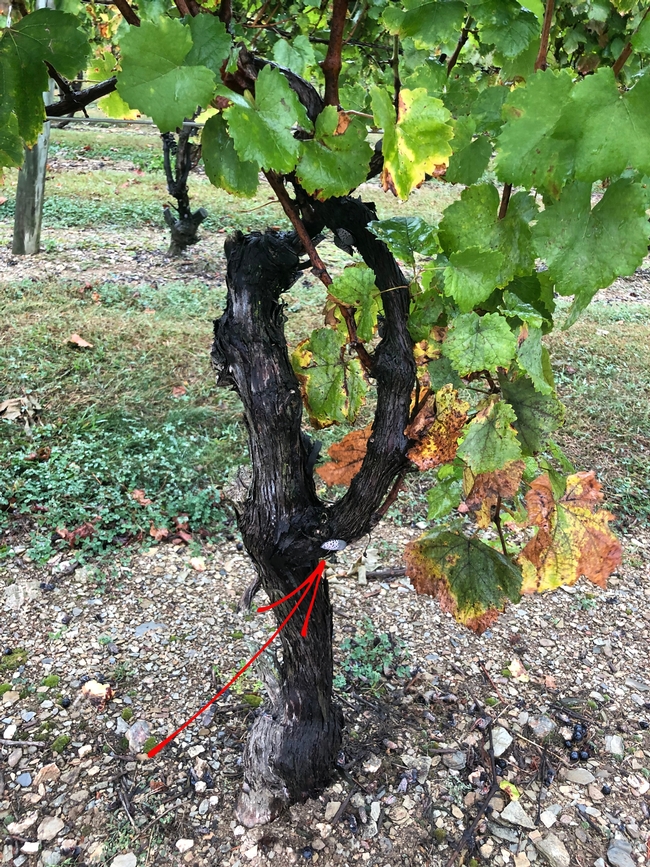
Posts Tagged: lanternfly
Invasive Spotlight: Spotted Lanternfly
The Spotted Lanternfly (SLF) is an invasive pest that poses a great threat to California's...
Important Invasive Species Updates
Invasive pest species threaten California's natural environment and can have an impact on public...
Keep an Eye Out for Spotted Lanternfly
The spotted lanternfly (Lycorma delicatula) is a new exotic pest that was first detected in...
UC Cooperative Extension helps raise the alarm on a looming insect threat
Strikingly beautiful with a striped yellow abdomen and ruby red and black polka dot wings, the spotted lanternfly's esthetic appeal belies its destructive nature.
“Spotted lantern fly is a major threat to apples, grapes, stone fruits, roses, landscape trees and the timber industry,” said Surendra Dara, UC Cooperative Extension entomology and biologicals advisor in San Luis Obispo, Ventura and Santa Barbara counties. “The agricultural industry and the public need to be looking out for this insect to prevent its migration and establishment in California.”
Native to China, spotted lanternflies were first introduced into the United States in 2014 when their presence was confirmed in Berks County, Penn. They have since established populations in New Jersey, Virginia, West Virginia, Delaware and Maryland. Spotted lanternflies are little more than a nuisance in their native range because they evolved along with controlling factors – such as predators and microbes – that achieved a natural balance. But when they arrive in new territory, the pest multiplies quickly and ravages plants.
While quarantine, management and research aim to control the pest where it has already taken hold, Dara is amplifying warnings of the pests' dire potential in agriculture-rich California and its ability to clandestinely hitchhike across the country. He held a webinar in May that attracted 130 participants from across California and the West, created a video, and posted articles in his eJournal and the Journal of Integrated Pest Management about current distribution, pest detection efforts and management strategies.
Inch-long adult spotted lanternflies have a nearly three-inch wingspan. Like giant aphids, the immature and mature stages of the pest suck sap out of plants and trees, depleting nutrients and reducing plant vigor, Dara said. While feeding, they emit waste sugars that cover plant leaves and invite fungi to grow black sooty mold, a coating that inhibits the plants' photosynthesis.
“SLFs can kill the host,” Dara said. “However, some survive because, when the plants start to die, the pest goes away to search for a healthier host, giving the plant the opportunity to recover.”
In the eastern U.S., residents say spotted lanternflies affect their quality of life and ability to enjoy the outdoors. The pest covers trees, swarms in the air and their honeydew can coat decks and playground equipment.
Spotted lanternfly movement is aided by females' ability to lay their nondescript egg masses on smooth surfaces of natural and human made objects, such as packages sent from distribution centers, long-haul trucks, railroad containers, recreational vehicles and automobiles.
“The egg masses are covered with a waxy gray-brown coating that looks like a splash of mud,” Dara said. “You may not notice it.”
Studies are underway to determine SLF egg-laying preferences.
Another concern for California in the face of a potential SLF infestation is the abundance of tree-of-heaven, itself an exotic pest from China and spotted lanternflies' favorite host. Tree-of-heaven – with roots, leaves and bark used in traditional Chinese medicine – was brought to California by Chinese migrant workers during the Gold Rush. Its tendency to grow rapidly and multiply quickly has resulted in its designation as a noxious weed.
Tree-of-heaven does offer a potential control strategy should SLF come to California. Landowners can remove 85% of tree-of-heaven specimens in a grove, including all the female plants. The remaining 15% of tree-of-heaven will be irresistible to spotted lanternfly. The insects will congregate in the trees, which may be treated with systemic insecticides to kill the entire population.
This is just one potential spotted lanternfly control strategy that could be part of an integrated pest management program. Other potential options Dara shared in his webinar and other communications are:
Traditional biocontrol. A parasitic wasp introduced into the United States in 1908 to control gypsy moths also appears to parasitize SLF eggs. Research may permit the introduction of other harmless natural SLF enemies from the pest's native range.
Microbial control. Naturally occurring fungi or those available as biopesticides can bring down SLF populations.
Mechanical control. Sticky bands placed on tree or vine trunks will trap the pest as it moves about.
Outreach. Communicate widely the concern about egg mass transport so people will inspect packages and vehicles and destroy egg masses.
California agriculture is watching for invasive spotted lanternflies
The Fresno Bee has raised the alert for spotted lanternflies, a devastating pest from India, Vietnam and China that may be making inroads in California, the No. 1 agricultural area of the nation.

Reports of spotted lanternflies in California have been minimal to date. Agricultural inspectors found several dead lanternflies on cargo planes in Sacramento, Stockton and Ontario, and experts say a live spotted lanternfly may have been seen on the wall of a hotel in Davis in September. No others have been found alive, the article said.
Surendra Dara, UC Cooperative Extension advisor in San Luis Obispo County, said the lanternfly does pose a particular challenge for California, but the hope is that in the next few years, researchers will have the tools to wipe them out. The most likely method would be to use a “biological” method, such as introducing a natural enemy from Asian to manage the population.
“With a strong insect, just like the virus everybody is dealing with now, you need to understand the biology,” Dara said. “You have to understand every aspect of it. The more we know the better we can handle the situation.”
For more in spotted lanternfly, read an update on the invasive spotted lanternfly, Lycorma delicatula: current distribution, pest detection efforts, and management strategies, by Dara on the UC Agriculture and Natural Resources website.



